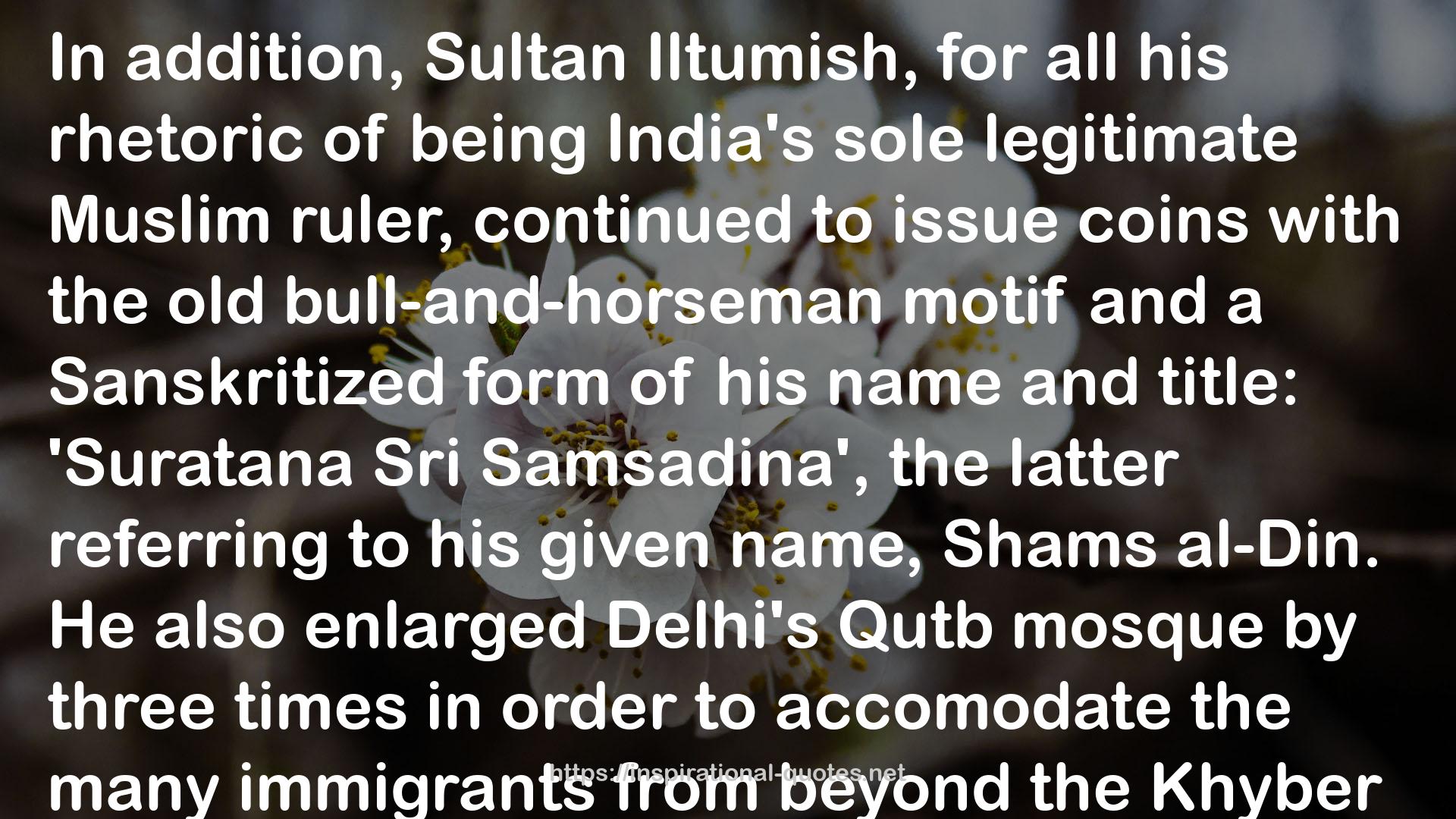" In addition, Sultan Iltumish, for all his rhetoric of being India's sole legitimate Muslim ruler, continued to issue coins with the old bull-and-horseman motif and a Sanskritized form of his name and title: 'Suratana Sri Samsadina', the latter referring to his given name, Shams al-Din. He also enlarged Delhi's Qutb mosque by three times in order to accomodate the many immigrants from beyond the Khyber who had flocked to Delhi during his reign. And he added three storeys to the city's famous minaret, the Qutb Minar. Notably, he placed a seven-metre iron pillar in the centre of the mosque's oldest courtyard, on a direct axis with its main prayer chamber. Originally installed in a Vishnu temple to announce the military victories of a fourth-or-fifth century Indian king, the pillar was now associated with Iltumish and his own victories. In transplanting the pillar in this way, the Sultan broke with Islamic architectural conventions while conforming to Indian political traditions. For in 1164, within living memory of Iltumish's installations of the Vishnu pillar in Delhi's great mosque, Vigraharaja IV Chauhan (r. 1150-64) recorded his own conquests on the same stone pillar on which the emperor Ashoka had published an edict back in the third century BC. "
― Richard M. Eaton , India in the Persianate Age, 1000–1765
